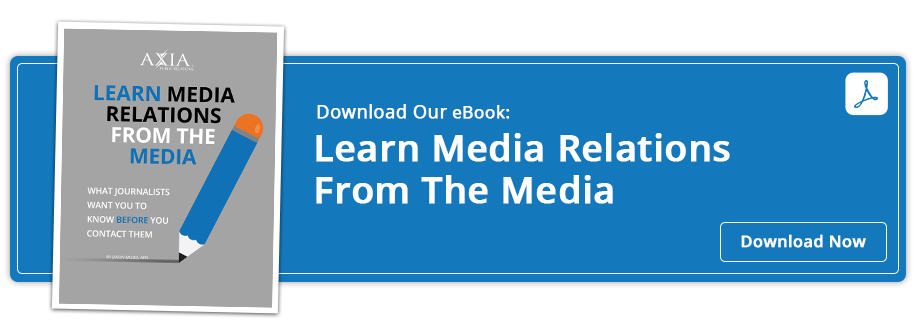Use these strategies to slice, dice, and personalize your company’s media segments.
 Pitching journalists can seem chance-oriented, like throwing spaghetti against a wall to see what sticks. To boost your opportunity for success, you need an organized system for keeping track of media contacts and targeting pitches. The key is to segment your lists into smaller groups with shared interests. Here are smart ways to slice and dice your lists for better pitching results.
Pitching journalists can seem chance-oriented, like throwing spaghetti against a wall to see what sticks. To boost your opportunity for success, you need an organized system for keeping track of media contacts and targeting pitches. The key is to segment your lists into smaller groups with shared interests. Here are smart ways to slice and dice your lists for better pitching results.
Audio: Listen to this article.
1. Categorize by Beats & Interests
The most obvious way to segment is by topic and beat. Group together reporters, producers, and editors who cover similar subject matter like business, healthcare, lifestyle, etc. You can take this a level deeper by creating sub-lists focused on narrower interests within those broader beats.
For example, further divide your business list into finance, real estate, retail, and HR sub-lists. The more closely aligned the journalist's area of coverage is to your pitch topic, the more relevant your outreach.
2. Refine by Preferred Platforms
In addition to segmenting by subject matter, it helps to group media contacts according to the specific types of placements they provide. Your broadcast list might consist of a TV reporter sub-list, radio sub-list and podcast sub-list. Print/digital contacts could be grouped by the name of the publication they work for. Or you might have reviewers, round-up/gift guide curators, and general assignment reporters as separate sections. Tailor your pitch to the journalist's preferred platform to increase appeal.
3. Personalize with Individual Preferences
Take your segmentation one step further by noting any unique preferences individual reporters express. If a journalist tweets "Don't pitch me fitness stories," flag that in your media database. If a local news producer says, "I need sources who can come to our studio," note that directly in their contact record. Personalizing your understanding of each media contact’s specific needs helps ensure you only pitch appropriate, relevant stories.
4. Localize Geographically
Segment your media list geographically to pitch location-specific story ideas when appropriate. Grouping by DMA gives you a targeted regional list to pitch for events, sources, and stories with a local tie-in. But don’t rely solely on where reporters are based — also consider the geographic regions their outlet covers. A journalist in New York may jump at a West Coast pitch if that angle works for their cross-country audience.
5. Update Interests Over Time
Media contacts’ areas of focus change over time. A film reviewer may transition to also oversee TV show coverage. A reporter focused on one niche industry may shift beats or publications entirely. Revisit your lists quarterly to update journalistic specialties, beats and outlets. Sign up for Google News Alerts on key media contacts to stay on top of their latest work and coverage areas.
6. Test & Optimize Segments
Leverage email analytics to see which segments garner the highest open and response rates when you deploy a pitch. Checking performance metrics will reveal which groupings of media contacts are most engaged. You can then further optimize that particular sub-list and pitch approach if a similar story arises in the future.
7. Cross-Reference for New Angles
Don’t silo reporters completely. Search across your finely segmented lists to identify journalists who might offer an interesting counterpoint or lend an unusual perspective to a story. A pop culture writer could critique the business strategy of a music app. Or a political journalist might analyze how proposed legislation affects the agriculture sector. Cross-referencing disparate segments sparks new story ideas.
The Bottom Line
There’s an art and science to organizing media contact data for successful pitching. Segment lists by beat, geographic region, individual preferences, content platforms, and specific interests that align with your pitch angles. Continually refine your groupings based on performance and changes over time. Hyper-targeted outreach boosts open rates, responses and coverage. Mastering media list segmentation takes your pitching game to the next level.
To learn more about improving your media pitching strategy, contact us today or book a one-on-one consultation.
Photo by energepic.com
Topics: media relations, earned media, news media


Comment on This Article